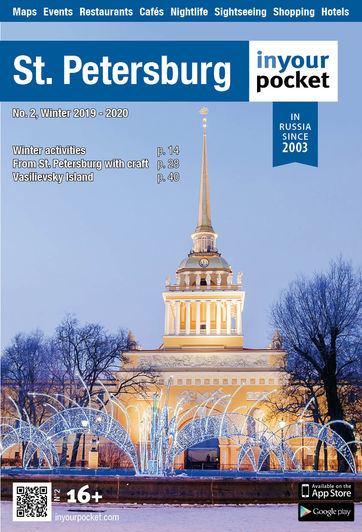Staraya Ladoga - the first capital of Russia! In 2003 Ladoga celebrated its 1250th anniversary.
8th century:
Ladoga is inhabited by various Slavic, Norse and Finnish tribes, and is one of the most important trading centres in Eastern Europe until 950. Archaeologists suggest that it was founded no later than 753, although the exact date cannot be determined. Trade routes from as far north as the Baltic Sea right down to Constantinople and Baghdad run through Ladoga, transporting goods such as weapons, timber, wax and amber from north to south, and bringing spices, jewellery, fabrics, bread and wine in the other direction. It was in Ladoga that archaeologists found the oldest Middle Age Arabian coin in Europe.
9th – 11th centuries:
The northwest of Russia is plagued by attacks by Scandinavian armies, and in 862 the citizens of Ladoga invite the Viking leader Rurik to protect and rule over their town. Two years later, he founds a new town nearby, Novgorod, and moves his ‘princely residence’ there, leaving control to his successor Oleg (who later moves south and conquers Kiev). At the end of the 9th century Oleg builds the first stone fortress in Ladoga, which is later destroyed in 997 by the Norwegian prince Erik.
In 1019 Yaroslav the Wise of Novgorod marries Ingigerd of Sweden and gives Ladoga to his wife as a wedding gift; the town is run by her representatives until her death, but at the end of the 11th century, a Russian administration replaces the primarily Viking one, and Ladoga’s importance as a military outpost begins to grow.
12th – 14th centuries:
The 12th century sees Ladoga becoming a suburb of the town founded by Rurik, Novgorod, and in 1114 the fortress destroyed in 997 is rebuilt by King Mstislav with walls eight metres high and two metres thick. The fortress withstands an attack by the Swedes in 1164, during which the inhabitants of Ladoga are caught off-guard with their army away fighting elsewhere. The citizens gather inside the fortress and send a message to Novgorod for help; meanwhile, their own resistance efforts are enough to drive away the Swedes. Help arrives once the Swedes have already retreated, and their ships are destroyed in a massive victory for Ladoga at the mouth of the Voronega river. One legend claims that the Church of St George inside the fortress was built to celebrate this success.
During the 12th century, Ladoga is home to no less than six stone churches, elaborately decorated with frescoes – this is testament to the importance and wealth of the town at this point in its long history. On his way through Ladoga towards the mouth of the Izhora in 1240, Alexander Nevsky prays in one of these churches, St George’s.
15th – 16th centuries:
Ladoga’s importance as a military town begins to decline from the 15th century, and most of its inhabitants become engaged in fishing. However, during this period, growth does still continue – the churches of St Peter, Simeon and Vasilii Kesariskii are built. Also, under the orders of Ivan the Terrible and in response to the spread of firearms, the fortress is reconstructed, and it becomes five-cornered, with only one entrance through the Vorotnaya (Gate) tower.
17th century:
Ladoga is plagued during the Time of Troubles by the intrigues and conflicts that arise from the excesses of Ivan the Terrible. Power struggles within the administration of Novgorod and its surrounding settlements end in 1617, when a peace treaty is signed between Sweden and the Russian government, headed by Tsar Mikhail Fyodorovich Romanov. This treaty returns control of Novgorod and Ladoga to Moscow, although the border with Sweden is located nearby. En route to Sweden after signing the peace treaty, Swedish troops destroy several Ladogan churches and monasteries.
18th century:
In 1704, under Peter the Great’s orders, the administrative offices of Ladoga, along with some of its citizens, are moved to a new town closer to the bank of Lake Ladoga, causing the ancient capital of Rus’ to acquire the name Staraya Ladoga, while the new town becomes known as Novaya Ladoga. Staraya Ladoga’s glory days are now over.
19th – 20th centuries:
Staraya Ladoga becomes an attractive destination for artists, due to its relative proximity to St Petersburg. The end of the 19th century sees the first archaeological excavations of Staraya Ladoga that are to become a yearly occurrence for much of the following century. In 1896 Nikolai Brandenburg’s work, ‘Staraya Ladoga’, comes to light, and the idea for an archaeological museum depicting the city’s long history arises. It is not until 15th July 1971, however, that this idea comes to fruition with the first museum exhibitions opened in the fortress. The history of Ladoga is preserved in its architectural and archaeological museum, and its thousands of exhibits.
Ladoga today:
Since 1990, every year on the second Sunday of July Staraya Ladoga celebrates ‘City Day’. Stages are erected for musical performances, the history of the city is evoked in an educational play and local handicrafts, such as carvings, paintings and lace are sold along the fortress walls.
And in the first week of July the town also has a historical festival which aims to recreate the Middle Ages for a couple of days. Jousting tournaments using historical weapons are staged, while for the more faint-hearted there are displays of everyday life during this period. This festival aims to bring Russia’s past to life in a location steeped in history.
Ladoga also plays host to a celebration for pupils of primary and middle school-age at the end of the academic year.
Prime Minister Putin likes Ladoga for its historical significance, and has visited the ancient town amid much pomp and circumstance; a special dock has even been built there for him!





Comments